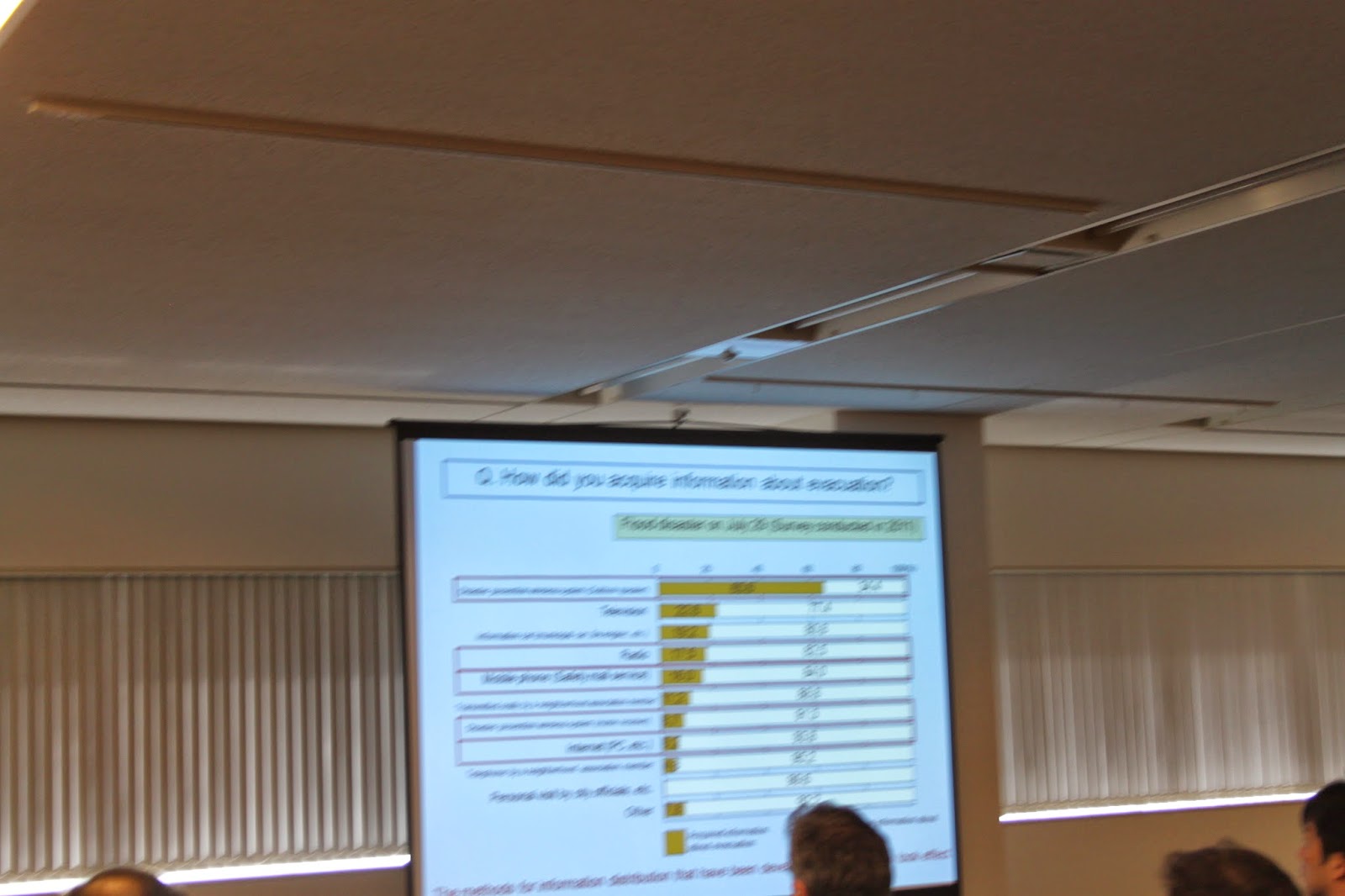World Conference on Disaster Risk Reduction in Sendai - day 4
Today I visited the AER TKP garden city building for a symposium with Japanese, Dutch and Italian experts on Disaster Risk Reduction. Many examples of infrastructure merging with local ecosystems and population demands were explained.
Extreme flood measure
symposium focused on low-lying urban areas
|
||
Schedule
|
2015-03-17
|
10:00-12:00, 14:00-16:00
|
Venue
|
AER TKP garden city Sendai, 21st
floor, hall A
|
|
Organizer
|
MLIT
|
|
Number of participants
|
200
|
|
Moderator,
Panelist, Speaker, etc.
|
Organizer:
Dr. Koji Ikeuchi, Director-General, Water and
Disaster Management Bureau, MLIT, Japan
Keynote speech:
Jos van Alphen, Staff Delta Programme Commissioner Netherlands
Giovanni Cecconi, Director of Active Knowledge
Management Centre Italy
Isato Kunisada, Mayor of Sanjo City Japan
Additional panelists:
Tadashi Yamada, Prof. of Faculty of Science and
Engineering, Chuo University Japan
Kiyoshi Takai, Director of Civil Engineering
Division of Edogawa Ward, Japan
Nobuyuki Tsuchiya, Citizen’s disaster prevention and
town development school Japan
|
|
Content
|
Ikeuchi: Tokyo has many areas under sea level:
shopping malls and subways, while rainfall is increasing to >1000mm, very
heavy rain. We want to ensure we have countermeasures. Weather satellites
increase knowledge to create hazard maps and timelines. We should have a
cooperative approach to events.
Van Alphen: There is a long history of
including Dutch expertise in Japanese water management. The Dutch main harbor,
government and capital are all in areas below sea level. WE have 3700km of
primary and 14000km of secondary levee defenses. The new Delta program looks
at the coming 85 years, until 2100. This was not started in answer to a
disaster, but in advance, to prevent it. Nature, NGOs, functions and future
populations, we include uncertainties into scenarios. Evacuation policy will
only activate when people will be in a flood >2.0m deep.
Cecconi: What is a resilient storm surge? In
EU we have the ECHO disaster figures. There are many mobile barriers in the
world, such as in Venice, Netherlands, Russia, United Kingdom, and New
Orleans. We cannot protect Venice with aging infrastructure. Therefore we
made an infrastructure/ecosystem solution. Layers of bio-bacteria tackle the
wastewater in the lagoon of Venice. A protective natural barrier surrounds
the wetlands/saltmarshes recreated in Venice. The Barrier rises in 20
minutes. If raised in 5 minutes it would generate a 2m tsunami. We needed
special paint to protect the metal of the barrier. The bio-barrier in Venice
can control wastes/nutrients. We need to have revenue from the barrier itself
to keep up maintenance. In the end it is learning with nature, the science not
of the beauty of the landscape, but the science that leads to reduction of
vulnerability. We now have fish farms, salt marshes, barrier island for
protection against storms. First there was heavy resistance against the lagoon
project, but taking their demands into account (no modification of tides in
summer, no effects on the ecosystem) led to working with nature. Adaption to
change is starting from what you don’t know and evolving with nature.
Kunisada: In 2011 there were 815 evacuees from
Fukushima city in Sanjo city, now there are still 144. We found that people
without disaster experience resist evacuation.
Yamada: There is no law yet in Japan about
climate change. In the US the army cannot be sued and they are doing
engineering works. In New Orleans there was no clear leadership/responsibilities,
therefore there was failure. Good education to children led by mayors is
crucial. If you cross the Ara river, you are already in Chiba, but the Tokyo
Metropolitan Government doesn’t pay attention to this area, even though
680,000 people live there, there are no skyscrapers or major companies. Evacuation
plans in this area should be made in cooperation.
Takai: There are historic images of Tokyo bay,
people gathering clams to eat. There was much liquefaction in Tokyo after
2011 GEJET. Renewal/development of super levees will take place at different
times. 120km in total.
Tsuchiya: Protagonist residents, there are 4
stages of denial: It won’t happen, it won’t happen to me, it is not so
severe, and we can’t do anything about it. This keeps people from acting on
disasters. Current multiphase flood maps are wrong, because people don’t know
where the flood water comes from.
Yamada asked question to Van Alphen: Are the
Dutch people aware of disasters, especially the new generations, do they
support education or not?
Van Alphen: We have very good protection
against floods, our last disaster was in 1953, and we were threatened in
1993-1995. Many people forget about this or don’t know. Most know they live
below sea level, this is in the school education, and we remember the 1953
event every year on television. No one is prepared, as the chance of flood is
so low and people trust the government. It doesn’t make life happy to be
aware, so people are not prepared. Authorities are seriously concerned about
this. What will happen to the public if something does happen?
|
|

































No comments:
Post a Comment